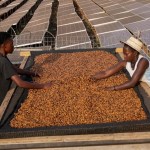(JUBA) – Intra-African trade surged to $220.3 billion in 2024, marking a 12.4 percent increase compared to the previous year, according to the latest trade report by the African Export-Import Bank (Afreximbank). This significant growth follows a 5.9 percent contraction in 2023 and reflects renewed economic momentum across the continent. South Sudan, while still in the lower rankings, recorded $1 billion in trade within Africa, demonstrating signs of regional engagement.
The rise in trade, described as a “gradual yet consistent advancement,” has been attributed to stronger performances by Africa’s major economies, particularly South Africa, Nigeria and Morocco. These countries continue to anchor the continent’s commercial recovery, driving demand and production in a wide range of sectors.
According to Afreximbank, the increase in intra-African trade is good news for millions of people across the continent who are looking to trade to create jobs, stimulate industry, and improve livelihoods. The rebound is also seen as a step toward realising the goals of the African Continental Free Trade Area (AfCFTA), which aims to eliminate trade barriers and boost commerce among African nations.
In contrast to the $196 billion recorded in 2023, when intra-African trade dipped from $208 billion in 2022 due to low demand, production bottlenecks, and geopolitical tensions, the 2024 figures point to a more positive trend. Tariff barriers and economic disruptions that previously hampered trade have eased in many regions.
South Africa remains the top intra-African trader, increasing its total trade from $39 billion in 2023 to $42 billion in 2024. This accounts for 19.3 percent of all intra-African trade. Nigeria rose to second place, overtaking the Democratic Republic of Congo (DRC) by doubling its trade volume to $18.4 billion, representing 8.3 percent of the total. The DRC posted modest growth, reaching $11.4 billion in 2024 from $10.8 billion the previous year.
Uganda is the only East African country to feature among the continent’s top 10, ranking ninth with $7.6 billion in intra-African trade, up from $5.9 billion in 2023, a 28 percent increase. Kenya followed at fourteenth position with $5.7 billion, ahead of Tanzania at $5.28 billion. Rwanda recorded $2.59 billion, while South Sudan registered $1 billion, equivalent to around SSP 4.6 trillion, using the July 2025 exchange rate of $1 = SSP 4,600.
Other regional figures included Somalia with $600 million and Burundi with $440 million.
| Country | Intra-African Trade (2024) | Equivalent in SSP (approx.) |
|---|---|---|
| Uganda | $7.6 billion | SSP 34.96 trillion |
| Kenya | $5.7 billion | SSP 26.22 trillion |
| Tanzania | $5.28 billion | SSP 24.29 trillion |
| Rwanda | $2.59 billion | SSP 11.91 trillion |
| South Sudan | $1 billion | SSP 4.6 trillion |
| Somalia | $600 million | SSP 2.76 trillion |
| Burundi | $440 million | SSP 2.02 trillion |
The report credits the DRC’s performance to its central location in Africa, which allows it to share borders with nine countries, including South Sudan, Uganda, Rwanda, Burundi, and Tanzania. Improved railway links, especially those connected to the Durban and Dar es Salaam corridors, have also supported trade flow.
The bank noted that the overall increase in trade was driven not only by economic recovery but also by the diversification of exports. While primary commodities like fuels and agricultural products still dominate, there is a growing exchange of manufactured goods and technology-intensive products.
Afreximbank highlighted the role of efforts to enhance industrial value chains, improve transport logistics, and boost manufacturing capacity across the continent. These efforts are gradually transforming Africa’s trade profile toward higher-value exports.
The growth in trade is expected to add momentum to the AfCFTA, which aims to create a single African market. The agreement is projected to lift 50 million Africans out of poverty, create 14 million jobs, and boost the continent’s economy by around $450 billion annually once fully implemented.
So far, seven countries have started trading under the AfCFTA framework: Kenya, Ghana, Rwanda, Tanzania, Mauritius, Egypt, and South Africa, which made its first official exports under the deal in 2024.
However, the Afreximbank report pointed out that intra-African trade is still significantly below its potential. In 2024, the continent missed out on an estimated $77 billion in unrealised trade, which could have raised the total to $296.3 billion, or nearly 20 percent of all African trade.
Key sectors with the greatest untapped potential for intra-African exports include machinery, electrical goods, motor vehicle parts, food products, minerals, plastics, chemicals, fertilisers, beauty products, and precious stones. Unlocking this potential, the report noted, is critical for achieving lasting economic transformation across the continent.


















































